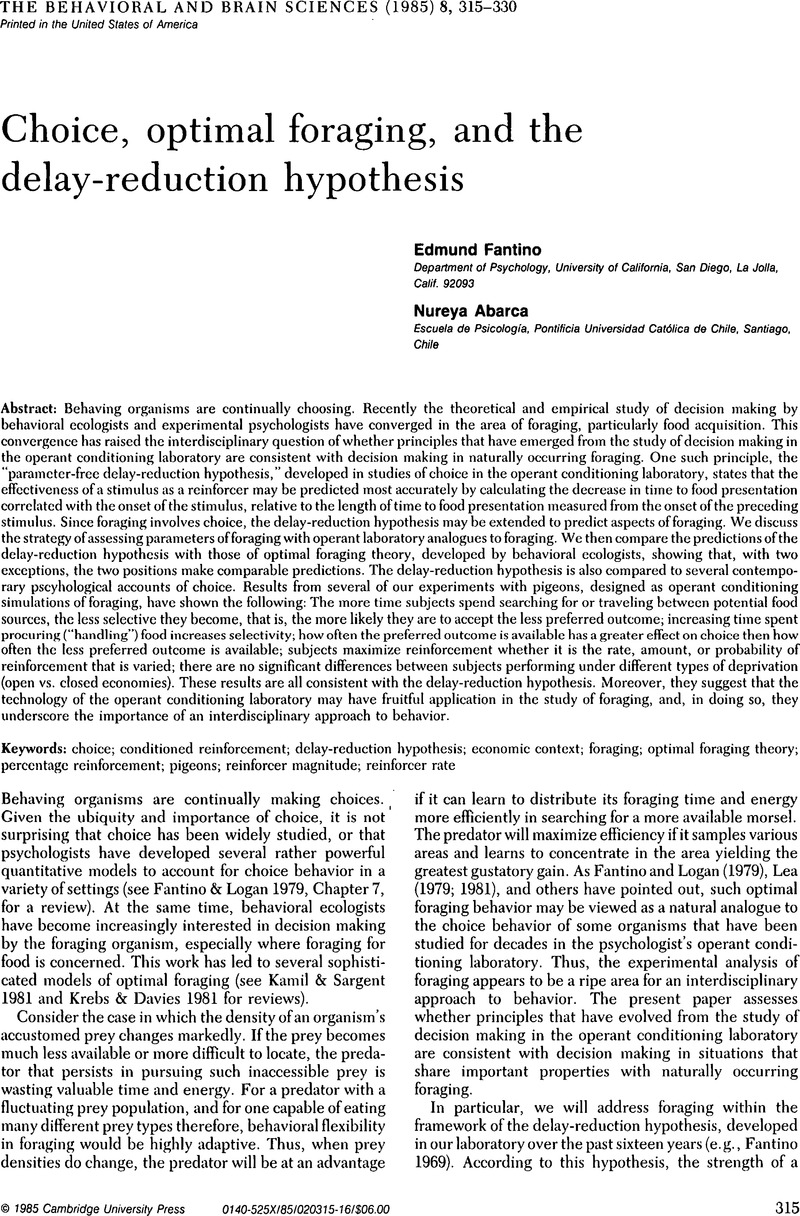Crossref Citations
This article has been cited by the following publications. This list is generated based on data provided by Crossref.
Wynne, Clive
1987.
Mechanisms of optimal choice.
Behavioral and Brain Sciences,
Vol. 10,
Issue. 2,
p.
316.
Fantino, Edmund
and
Abarca, Nureya
1987.
Delay-reduction theory: Straddling the functional-mechanism continuum.
Behavioral and Brain Sciences,
Vol. 10,
Issue. 2,
p.
317.



